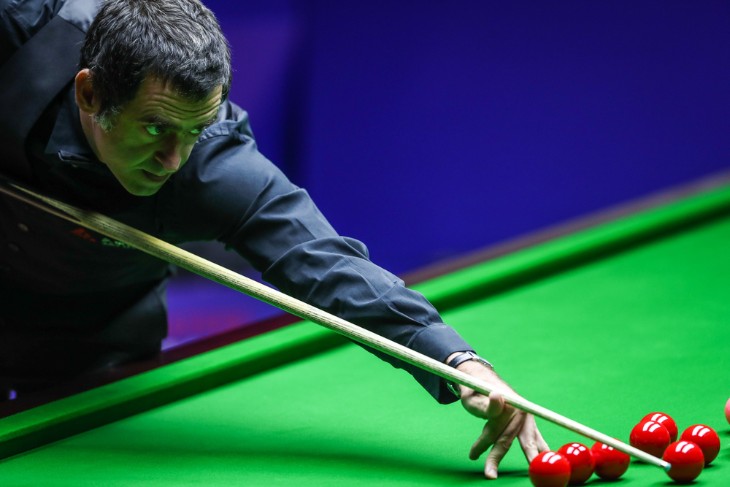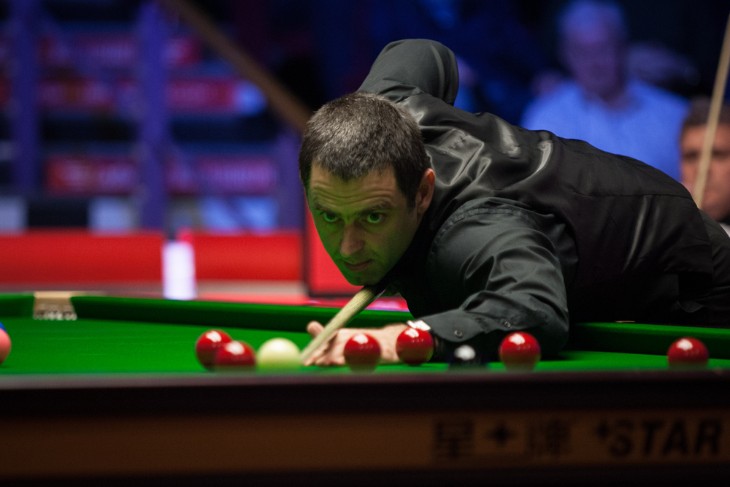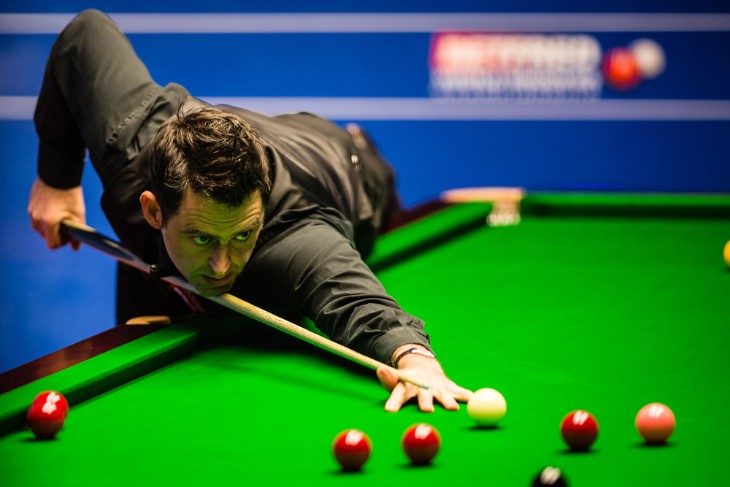In snooker, frame winning margin bet can add an extra layer of excitement to the game. Frame winning margin bets offer a way for bettors to predict the specific difference in frames between the winner and loser of a match. One common type of frame-winning margin bet is to predict that a player, let's say Player A, will win the match by a margin of just one frame. This means Player A needs to finish the match with one more frame won than their opponent, Player B. This type of bet adds a level of specificity to the prediction, making it more challenging yet potentially more rewarding.
On the other hand, bettors can also choose to predict that the match will end in a tie, often referred to as a draw in snooker terms. This means both players finish the match with an equal number of frames won. Draw bets can be intriguing, especially in closely contested matches, where predicting a tie requires an understanding of the players' skills and the potential for closely contested frames. Additionally, another frame winning margin bet could involve predicting that a player, for example, Player B, will win the match with a margin of two frames or more. In this scenario, the bet is successful if Player B finishes the match with a lead of at least two frames over Player A, offering a different perspective on possible outcomes in the match.
Margin matters, but there are many things to consider if you want to win these bets. Let’s take a closer look:
Player Form and Skill Levels
Player form and skill levels are crucial factors to consider when frame winning margin bets in snooker matches. Form refers to how well a player has been playing recently, while skill levels indicate a player's overall ability in the game. To assess form, look at the player's performance in recent tournaments or matches. If a player has been winning consistently and showing good control over the snooker table, their form is likely to be positive. On the other hand, if a player has been struggling or losing matches, their form may be less favourable.
Skill levels involve understanding how skilled a player is at different aspects of snooker, such as potting, safety play, and break-building. Highly skilled players often have a good balance of these abilities, making them formidable opponents. Assessing a player's skill levels can help predict their performance in a match. Keep in mind that skill levels may vary among players, and recognizing the strengths and weaknesses of each competitor is essential for making informed betting decisions.
Key Considerations:
- Recent Performance: Analyze the player's recent matches to gauge their current form.
- Consistency: Players who consistently perform well are likely in good form.
- Win-Loss Record: A positive win-loss record indicates a player in good form.
- Skill Balance: Look for players with a well-rounded skill set, including potting, safety play, and break-building.
- Trends: Identify any trends in a player's performance over several matches.
Head-to-Head Record
The head-to-head record in snooker refers to the history of matches between two players. It's like keeping track of who wins when these players face each other. This information is valuable for frame winning margin betting because it helps predict how players might perform against specific opponents. If one player consistently wins against another, it suggests a certain level of dominance or advantage in their matchups. However, if the head-to-head record shows close and competitive matches, it indicates that the players are evenly matched, making the outcome less predictable.
Analyzing the head-to-head record involves looking at the number of times each player has won against the other and understanding the patterns in their performances. This information provides insights into how they handle the pressure when playing against a particular opponent and can guide betting decisions based on historical outcomes.
Key Considerations:
- Dominance: Check if one player has been consistently winning against the other.
- Competitiveness: Assess if the head-to-head record indicates closely contested matches.
- Patterns: Look for any patterns or trends in the outcomes of their previous encounters.
- Pressure Situations: Consider how players perform under pressure when facing each other.
Tournament Format
The tournament format in snooker is like the set of rules that decides how snooker matches are played in a particular event. Different tournaments can have varying formats, affecting the number of frames in a match and how players progress through the competition. Understanding the tournament format is essential for making frame winning margin bets because it influences factors like the length of matches and the strategies players might employ. Some tournaments have shorter matches in the early rounds, while others have longer matches, which can impact the winning margin possibilities.
In some events, players may need to win a certain number of frames to advance, while in others, they may need to win a specific number of matches. Additionally, the final rounds of a tournament might have more frames, making it potentially more challenging for one player to win by a large margin. Being aware of the tournament format helps bettors make more informed predictions about how players will fare in different stages of the competition.
Key Considerations:
- Match Length: Understand how many frames are played in a match.
- Progression Rules: Know how players advance through the tournament (e.g., winning frames or matches).
- Round Differences: Consider if the later rounds have more frames, impacting potential winning margins.
Player Styles
In snooker, player styles refer to how individuals approach and play the game. Players have unique ways of handling shots, strategizing, and adapting to different situations on the snooker table. Understanding player styles is important when betting on winning margins because it helps predict how a match might unfold. Some players are known for their aggressive style, focusing on potting balls and scoring heavily, while others adopt a more defensive approach, prioritizing safety play and careful positioning.
Aggressive players tend to take risks for high-scoring opportunities, potentially leading to larger winning margins if they are successful. On the other hand, defensive players may keep matches closer by emphasizing control and minimizing mistakes. Recognizing these different styles allows bettors to assess how players might influence the overall flow of a match, impacting the potential winning margin.
Key Considerations:
- Aggressive Play: Some players prefer attacking shots and high-scoring strategies.
- Defensive Play: Others focus on safety play and strategic positioning.
- Risk-Taking: Aggressive players may take more risks for big scores.
- Control: Defensive players prioritize control and minimizing errors.
- Adaptability: Consider how players adjust their styles based on the match situation.
Frame Handicaps
Frame handicaps are a way to make snooker matches more balanced when there's a perceived difference in skill levels between two players. It's like giving one player a head start in the number of frames before the match begins. This concept is crucial in frame winning margin betting because it allows for more varied and competitive options. The player considered the stronger one might start the match with a "handicap" by needing to win more frames than their opponent, making the betting scenario more even.
For instance, if Player A is more skilled than Player B, a frame handicap might require Player A to win, let's say, four frames, while Player B only needs to win three. This equalizes the chances for both players in the betting context. Frame handicaps add an extra layer of strategy for bettors to consider, as they need to predict not just the winner but also the winning margin adjusted for the handicap.
Key Considerations:
- Balancing Matches: Frame handicaps make matches more even when there's a skill difference.
- Adjusting Winning Margins: Bettors need to consider the handicap when predicting winning margins.
- Favourable Odds: Frame handicaps can provide more attractive odds for betting.
- Understanding Handicap Values: Different handicaps represent various starting points for players in terms of the number of frames they need to win.
Tournament Stage
The tournament stage in snooker refers to where the competition stands in terms of progress. Tournaments typically have different stages, such as the early rounds, quarter-finals, semi-finals, and the final. The stage of the tournament can significantly impact player performances and, consequently, winning margin bets. Early rounds may feature longer matches with more frames, giving players more opportunities to establish dominance. As the tournament progresses to the later stages, matches may become shorter, increasing the likelihood of close contests.
In the early rounds, players may focus on getting accustomed to the conditions and building confidence. As the tournament advances, the pressure tends to intensify, and players often raise their game to secure a spot in the later rounds or the final. Understanding the dynamics of each tournament stage is essential for bettors to make informed predictions about how players will perform under varying levels of pressure.
Key Considerations:
- Early Rounds: Longer matches provide more opportunities for players to establish dominance.
- Pressure in Later Rounds: Matches become shorter, increasing the intensity and pressure on players.
- Player Adaptability: Consider how players adjust their strategies and focus as they progress through the tournament.
- Importance of Matches: The significance of each match increases in the later stages, impacting player motivation and performance.
Venue Conditions
In snooker, the venue conditions play a significant role in how players perform during a match. The conditions at the venue, such as the lighting, temperature, and humidity, can affect the behaviour of the snooker table and the players' overall experience. For example, the speed of the table, or how fast the balls roll, can vary based on factors like temperature and humidity. A warmer venue might make the table play faster, influencing how players control the cue ball and pot balls.
Noise levels and distractions in the venue are also essential considerations. Snooker requires a high level of concentration, and a noisy or disruptive environment can impact a player's focus and decision-making. Being aware of the venue conditions helps bettors understand the potential challenges players may face and make more accurate predictions about winning margins based on how well players can adapt to the specific conditions.
Key Considerations:
- Table Speed: Warmer conditions may make the snooker table play faster.
- Noise and Distractions: High levels of noise or disruptions in the venue can affect player concentration.
- Temperature and Humidity: These factors can influence the behaviour of the snooker table and the players' comfort.
- Adaptability: Consider how players adjust their game to the specific conditions of the venue.
In-Play Betting
In-play betting, also known as live betting, is an exciting aspect of snooker wagering where bets are placed while a match is ongoing. Unlike traditional betting before a match begins, in-play betting allows bettors to make predictions and adjust their bets based on the unfolding events during the game. For snooker, this means you can watch a match live and make decisions on how you think the players will perform as the game progresses. In-play betting adds an interactive dimension to the betting experience, offering opportunities to react to changing circumstances and capitalize on emerging trends.
When engaging in in-play betting for snooker, it's important to pay attention to the momentum shifts within a match. If a player starts performing exceptionally well or struggles unexpectedly, these developments can be used to inform your betting decisions. The ability to observe the match live provides valuable insights into player form, tactical adjustments, and the overall dynamics of the game, enhancing the strategic element of in-play betting.
Key Considerations:
- Real-Time Decisions: Make bets based on the live action happening in the match.
- Momentum Shifts: Recognize when a player gains or loses momentum during the game.
- Player Form: Assess how well players are performing in real-time.
- Strategic Adjustments: Adapt your betting strategy based on the evolving dynamics of the match.
- Interactive Experience: In-play betting allows for an engaging and dynamic betting experience.
Player Motivation
Player motivation is a key factor in snooker that can influence how players approach and perform in a match. Motivation is about what drives a player to give their best on the snooker table. In tournaments, some matches may be more crucial for players than others. For example, early rounds might be important for advancing to later stages, while the final can be the pinnacle where winning carries significant prestige and rewards. Understanding the importance of a match to a player helps bettors predict how focused and determined they might be during the game.
Motivation can stem from various factors, including a desire to win titles, earn prize money, or achieve personal milestones. Some players may be more motivated in certain tournaments or against specific opponents. For betting, considering player motivation is crucial because it provides insights into how players might perform under different circumstances, affecting the potential winning margin.
Key Considerations:
- Tournament Importance: Assess the significance of the tournament for each player.
- Personal Milestones: Consider if players are aiming for specific achievements or records.
- Opponent Rivalry: Matches against particular opponents may carry extra motivation.
- Prize Money: The financial rewards associated with winning can impact player motivation.
- Tournament Stage: Motivation may vary at different stages, with players often more determined in later rounds.
Statistical Analysis
Statistical analysis involves looking at numbers and data related to a player's performance in snooker. By examining statistics, which are like detailed records of a player's actions on the snooker table, you can identify patterns and trends that help understand how well a player is playing. These statistics include things like the percentage of successful shots, the number of frames won, and the average score per visit to the table. Analyzing these numbers provides valuable insights into a player's strengths and weaknesses, helping bettors make informed decisions.
For instance, if a player has a high percentage of successful shots or consistently wins a large number of frames, it suggests they are in good form. On the other hand, if a player struggles in certain aspects, such as potting balls or playing safe shots, it might indicate areas where they are not performing as well. Statistical analysis helps bettors go beyond just watching matches and provides a more detailed understanding of a player's overall game.
Key Considerations:
- Successful Shots: Analyze the percentage of shots a player successfully makes.
- Frames Won: Look at how many frames a player wins on average.
- Average Score: Consider the average score a player achieves in each visit to the table.
- Consistency: Check if there are consistent patterns in a player's performance over several matches.
- Identifying Trends: Statistical analysis helps identify trends and patterns that can guide betting decisions.
Market Odds
Market odds in snooker betting refer to the numbers or ratios that represent the potential payout for a specific bet. These odds are set by bookmakers and reflect their predictions about the likelihood of different outcomes in a match. Understanding market odds is crucial for bettors as it helps them assess the potential rewards and risks of placing a particular bet. In snooker, market odds can change based on various factors such as player form, head-to-head records, and overall betting activity.
For example, if a player is considered the favourite to win a match, the odds for that player might be lower, indicating a lower potential payout. On the other hand, if a player is seen as the underdog, the odds for that player could be higher, offering a higher potential payout if they win. Bettors need to carefully evaluate market odds and consider factors like player form and tournament stage to identify potential value in the odds.
Key Considerations:
- Favourite vs. Underdog: Lower odds often indicate a favourite, while higher odds suggest an underdog.
- Potential Payout: Odds reflect the potential winnings for a successful bet.
- Changing Odds: Keep an eye on how odds change based on factors like player performance and betting trends.
- Value Betting: Assess if the odds offer good value based on your analysis of the match.
- Risk and Reward: Understand the relationship between odds, risk, and potential rewards before placing a bet.






.webp)


 (1).webp)




















